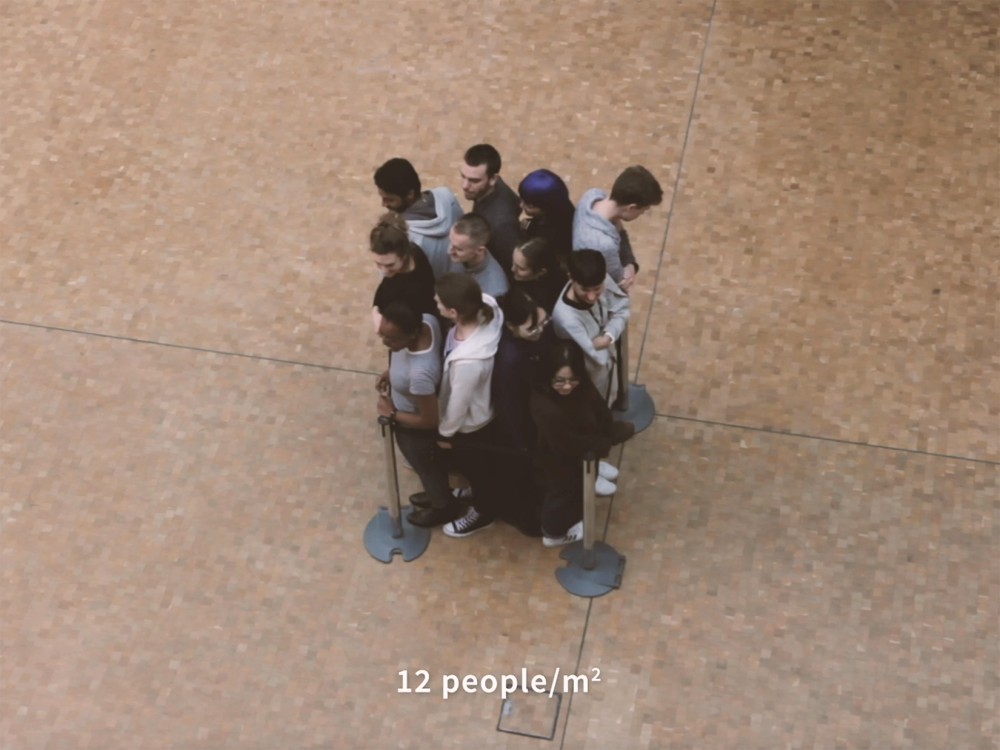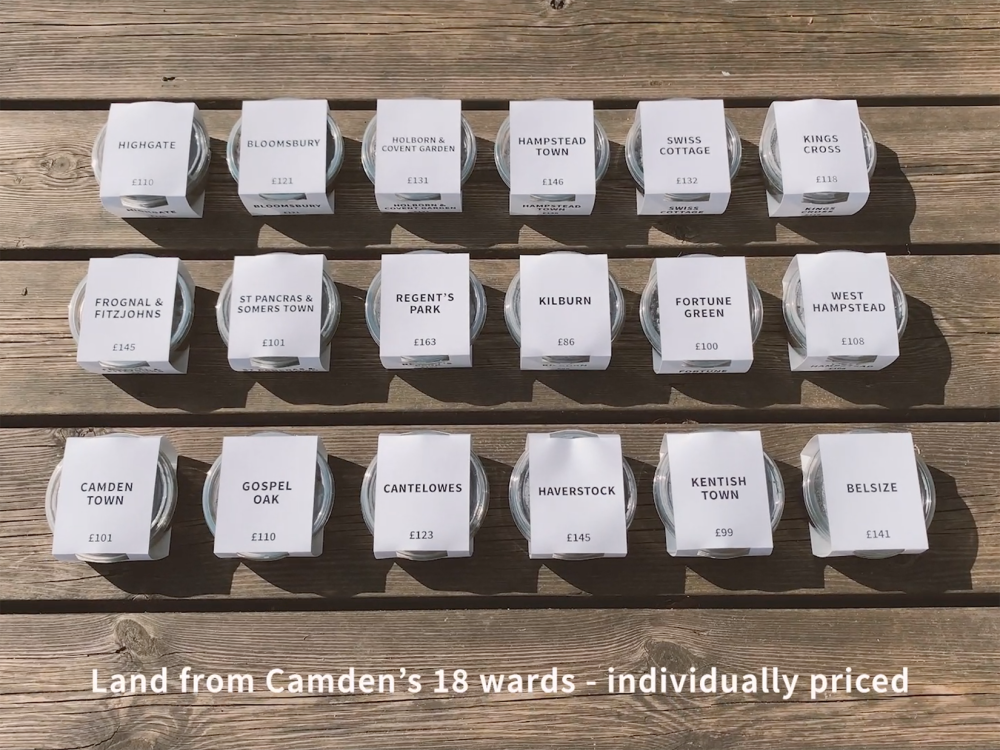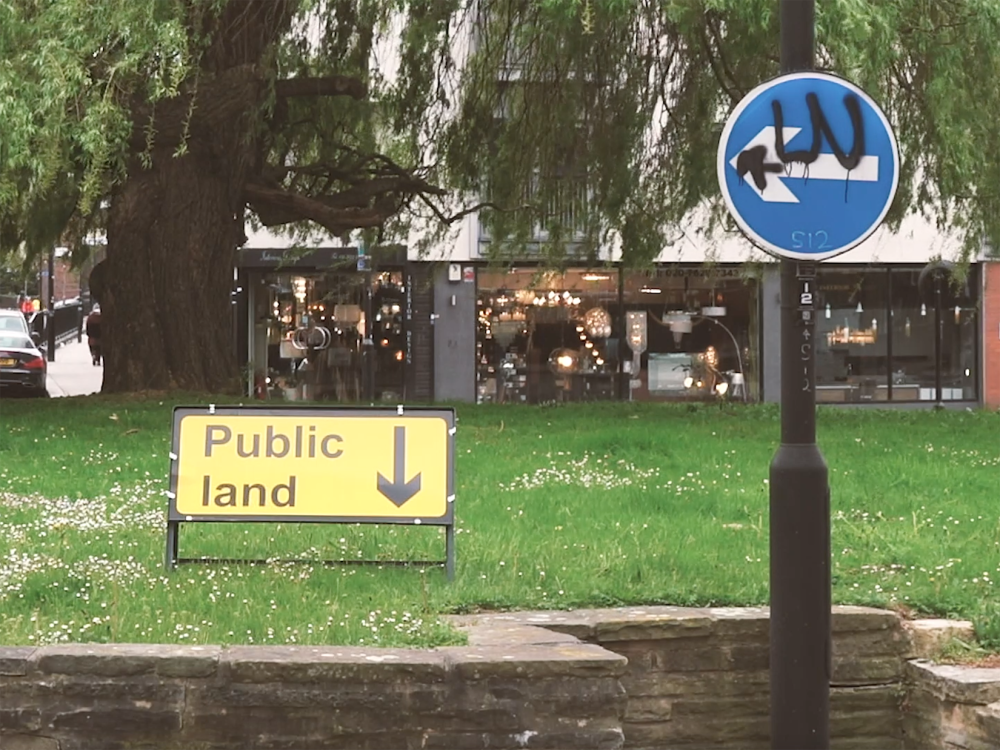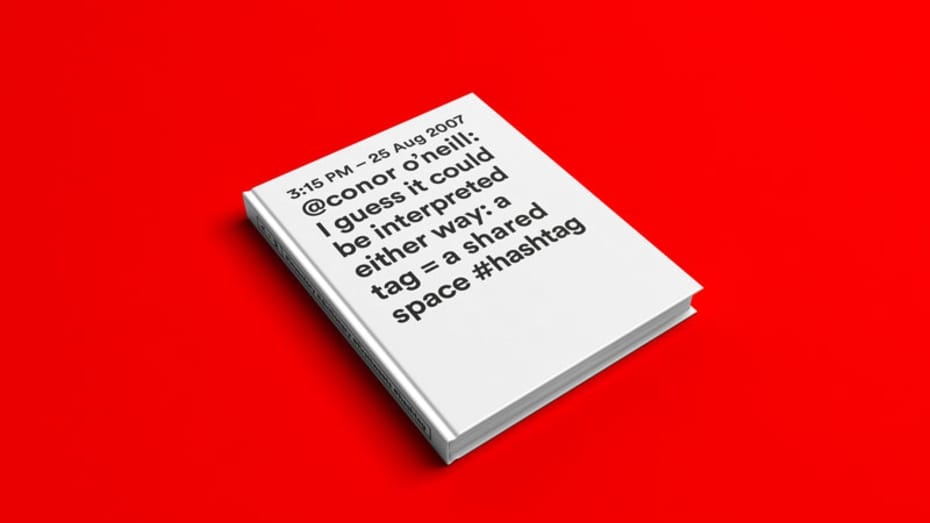Throughout Show Two: Design, we’re celebrating the work of our graduating students and asking them to share the process behind the practice
Graduating from MA Graphic Communication Design, Penny Hartley combines filmmaking, graphic design, writing and publishing in work that touches on psycho-geography and social economics. Her work is discursive and often appropriates the visual language and semiotics of the temporal, the ‘hiding-in-plain-sight’, to provoke dialogue around larger social issues.
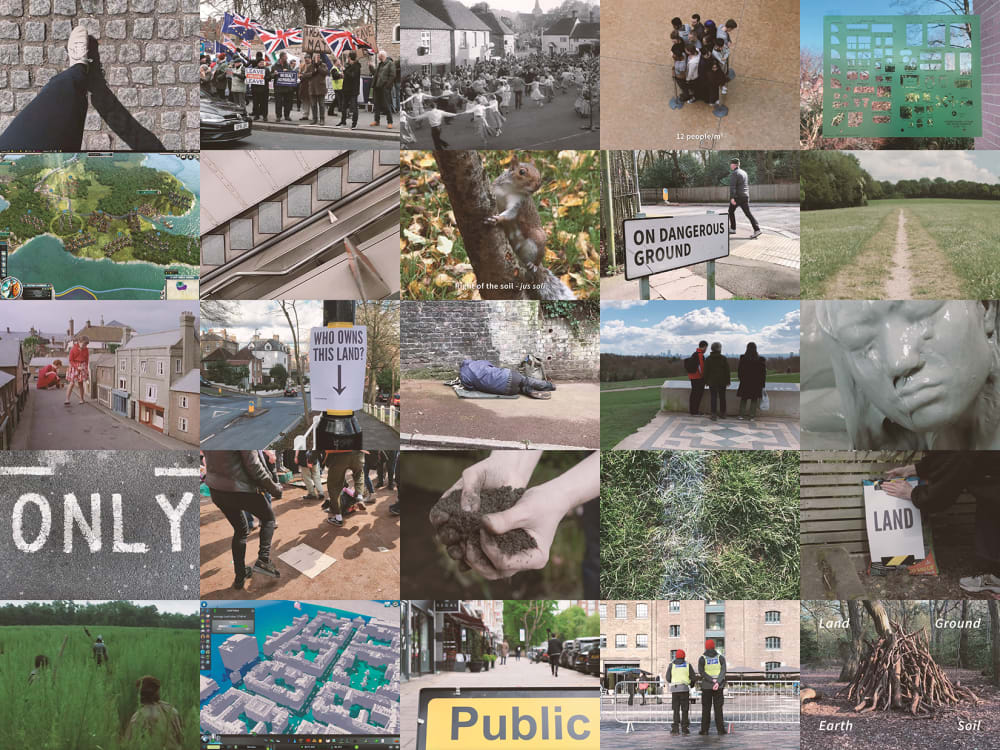
Land Ground Earth Soil
My project comprises a film and book exploring feelings about British identity, land ownership and public spaces; particularly against the backdrop of Brexit and rising inequality and division. I’m interested in drawing out unnoticed connections and contradictions. I've always been interested in the social and political nature of the world. But it came into sharper focus with the financial crisis of 2008, which laid bare for me just how conditional and interdependent all the systems of our societal infrastructure really are. In order to explore my cognitive dissonance at the saturation of news, data and imagery, I combine my own narration, filmed iterations, thought-experiments and interviews together with short clips from movies, tv, news, video games and 20th century public information films.
Our land
I’m interested in the UK’s broken housing market and how it reaches further into our everyday lives than we realise. UK land-ownership is notoriously secretive and has largely been kept out of the public eye for centuries and I believe something as simple as the different language we use to talk about the very ground beneath our feet helps perpetuate this.
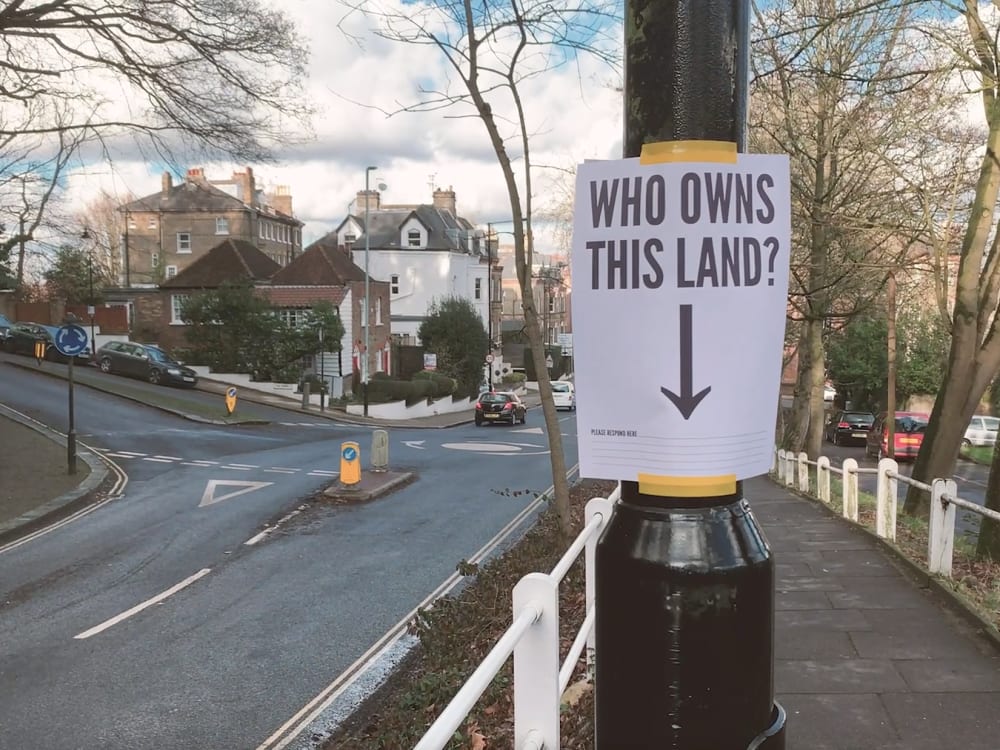
The problem with language
We use the word “earth” when talking about climate change, “ground” for roadworks and “soil” for horticulture; while “land” is used when talking about ownership, whether perceived or real. The gaps that open up between these words effectively silo issues that should be seen as part of a the whole, like homelessness, tax-avoidance and climate change. We are all stakeholders in our land, ground, earth, soil – whichever word we use. It is a common good, and public dialogue about its “ownership” is long overdue.
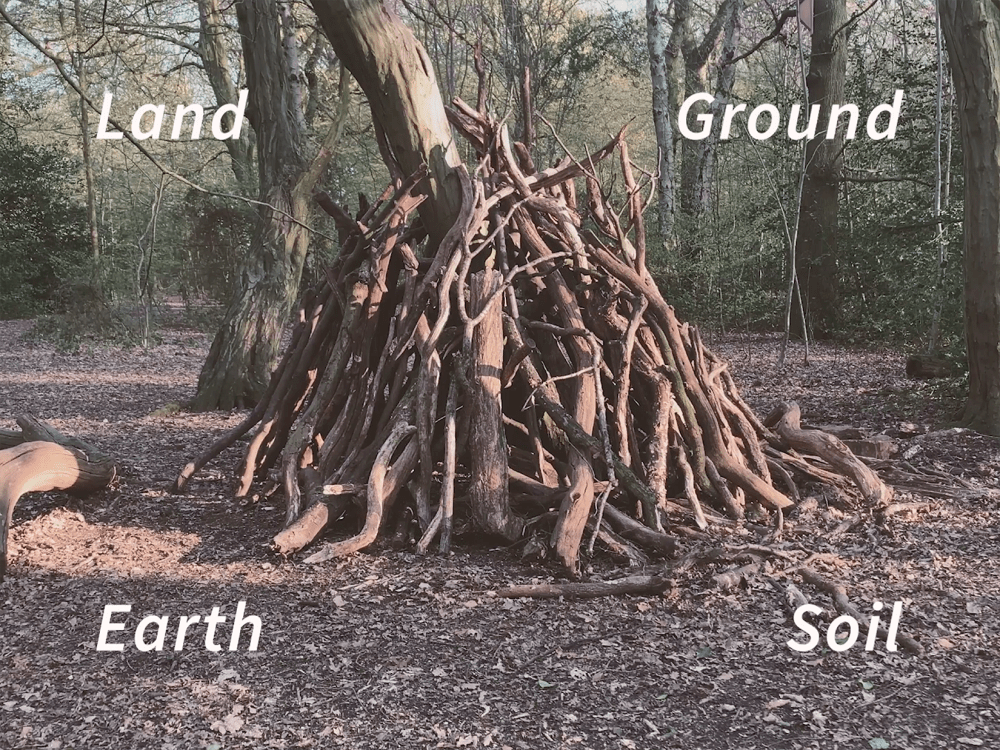
Thought experiments
In my final project I look for ways to talk about our land on a more human, relatable scale. I experimented with visually metricising how we share spaces and how land is valued, with the basic units of 1 metre2 and 1 kilometre2 as starting points for two thought experiments. The first involves safety barrier tape and the kind participation of CSM staff and students in demonstrating the temporary population density of 12 people/m2 on a crowded rush-hour tube, followed by the residential population densities of London relative to other world cities. Even this small-scale experiment reveals the defensive body language we all deploy in crowded situations.
The next involves the materiality of land, ground, earth and soil. I collect soil – or land – from a public place in each of the London borough of Camden’s 18 wards. I package it in 200g plastic pots that previously contained hummus (which seems curiously fitting in that humus is the dark organic component of soil made from dead plant and animal matter, whereas hummus is of course the beloved Levantine dip). The pots contain the equivalent to a hundredth of a notional metre2, with the price of their corresponding land values scaled down accordingly. These vary from £99 for a pot of soil/land from Kentish Town to £163 from Regent’s Park.
Gallery
Public land
“Public land” signs are a response to one of the project’s central themes: the diminution of a precious resource that we barely know we have – public land. Over the last 40 years more than half of it has been quietly and irrevocably sold off, to private companies. This results in privately-owned public spaces like King’s Cross which, while they can be very appealing and community-orientated, now have limits of use and access, and crucially have been stripped of the historical democratic rights that were formerly attached to them.
Penny Hartley has been nominated for the MullenLowe NOVA Awards. Her “Land, Ground, Earth, Soil” is showing in her garden shed installed in the Lethaby Gallery, Central Saint Martins during Show Two: Design, 19-23 June. The shed is also available after the show to anyone who is prepared to come and remove it on Monday 24 June.


